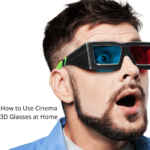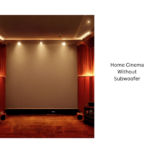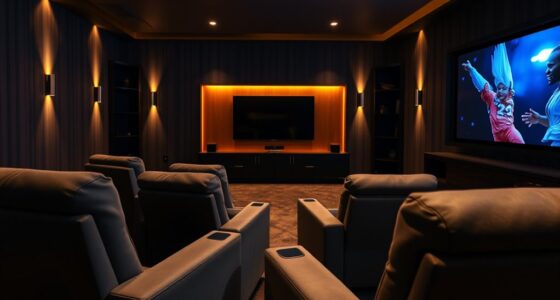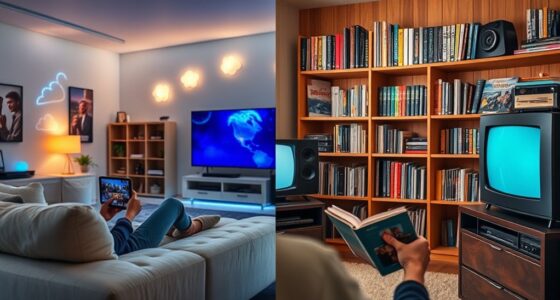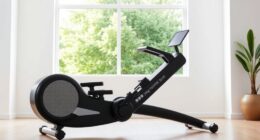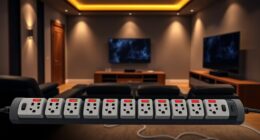To watch Curzon Home Cinema on your LG TV, first, check if your model supports the app and make sure it's connected to a reliable internet connection. Update your TV's firmware for peak performance. If the app isn't available on your TV, consider using external devices like Chromecast or Amazon Fire Stick. Once you have the app, log in with your Curzon account details. You can browse and rent films, which you must start watching within 30 days. For a smooth experience, troubleshoot any issues you encounter, and you'll discover helpful tips along the way.
Key Takeaways
- Ensure your LG TV firmware is updated for optimal compatibility with the Curzon Home Cinema app.
- Check the LG TV app store for the availability of the Curzon Home Cinema app.
- Log in to the Curzon Home Cinema app with your account credentials to browse and rent films.
- Use a stable internet connection with a minimum speed of 5 Mbps for smooth streaming.
- If issues persist, consider using external devices like Chromecast or Amazon Fire Stick for better access.
Overview of Curzon Home Cinema
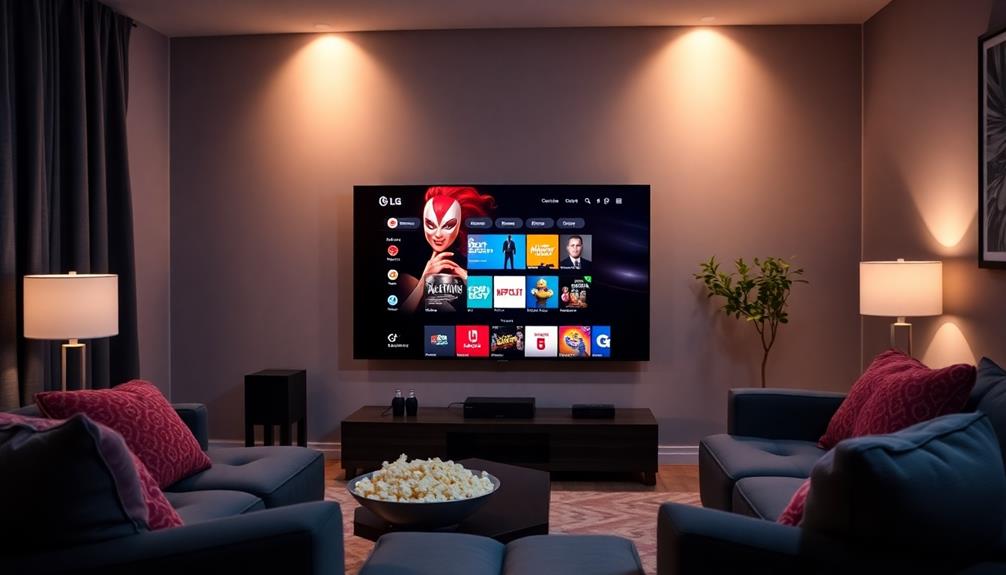
Curzon Home Cinema offers a unique way for film lovers to explore a diverse range of arthouse and acclaimed movies. As a digital extension of Curzon, this platform specializes in independent releases and classic films, letting you rent films without needing a subscription.
You can easily access a curated selection of titles that cater to your cinematic tastes, including options that highlight the importance of color accuracy in projection. When you rent films from Curzon Home Cinema, you'll have a generous 30 days to start watching them. Once you hit play, a 48-hour watch window begins, giving you ample time to enjoy the film at your convenience.
If you're new to the platform, you can enhance your initial viewing experience with a welcome collection upon account creation, ensuring you immerse yourself in some fantastic films right away.
Curzon Home Cinema also includes a subscription option through Curzon Channel, which provides even more film access if you prefer a monthly plan.
Whether you're using your LG TV or another device, this platform makes it easy to explore a rich library of arthouse films and independent releases, all at your fingertips.
Checking Compatibility With LG TV
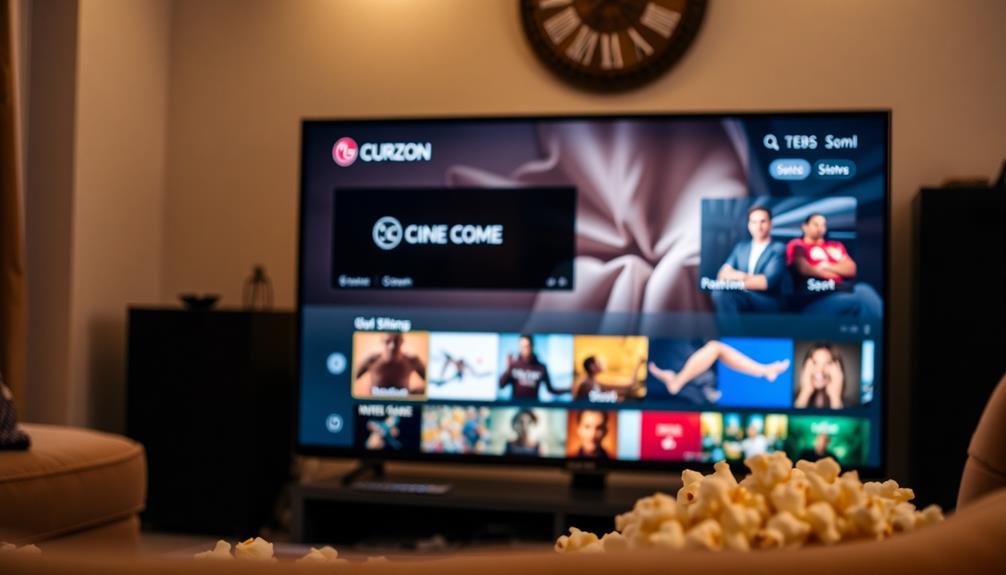
Before you start streaming Curzon Home Cinema, it's essential to check your LG TV's compatibility.
Make sure your TV's firmware is up to date and verify if the app is available for your model.
Additionally, ensuring that your TV can effectively handle various streaming technologies will enhance your viewing experience, similar to how air purifiers improve indoor air quality.
If you run into issues, consider using an external device like Chromecast or Amazon Fire Stick for a smoother experience.
App Availability on LG
Checking the compatibility of the Curzon Home Cinema app with your LG TV is vital for a seamless streaming experience. Not all LG models support the app, so it's important to verify app availability on your specific device.
If you own an LG Ultra HD 4K TV, be aware that you might encounter streaming issues due to firmware support. Additionally, it's significant to confirm your TV has the necessary specifications for ideal app performance, as some models may lack the required processing power.
For more information, you can refer to air purifier effectiveness regarding how technology plays a role in maintaining quality experiences.
To enhance your streaming, consider these tips:
- Check your LG TV model against the Curzon Home Cinema compatibility list.
- Use a stable internet connection with a minimum speed of 5 Mbps for ideal streaming performance.
- Look for firmware updates for your LG TV to confirm the best compatibility.
- Explore third-party devices like Chromecast or Amazon Fire Stick to access Curzon Home Cinema more effectively.
- Regularly update the Curzon Home Cinema app for seamless integration with your LG TV.
Firmware Update Necessity
Updating your LG TV's firmware is an important step in ensuring that you have a smooth experience with the Curzon Home Cinema app. Outdated firmware can lead to compatibility issues with streaming apps, so it's vital to keep your software up to date.
To check for a firmware update, follow these simple steps:
| Step | Action |
|---|---|
| 1. Settings Menu | Navigate to the settings menu on your LG TV. |
| 2. About This TV | Select "About this TV." |
| 3. Software Update | Look for any available software updates. |
| 4. Install Update | If an update is available, install it. |
| 5. Restart TV | Restart your LG TV to finalize the update. |
Regular firmware updates not only enhance performance but also improve compatibility with streaming services like Curzon Home Cinema. If you find that your LG TV is still having issues after updating, consider using a streaming device like Chromecast or Amazon Fire Stick as an alternative method to access the service. Keeping your firmware updated is vital for a superior streaming experience.
Streaming Device Recommendations
If you're looking to enjoy Curzon Home Cinema on your LG TV, using a streaming device can greatly enhance compatibility and functionality. Since Curzon Home Cinema isn't natively available on LG Smart TVs, devices like Chromecast or Amazon Fire Stick can bridge that gap.
Here are some recommendations for peak streaming:
- Chromecast: Allows you to cast content directly from your phone or tablet.
- Amazon Fire Stick: Offers a user-friendly interface and access to various apps, including Curzon.
- Roku: Another versatile streaming device with great app support.
- Apple TV: Perfect for those already in the Apple ecosystem.
- NVIDIA Shield: Ideal for high-performance streaming and gaming.
Make certain your LG TV has available HDMI ports for these devices.
Also, check the LG TV app store for the Curzon Home Cinema app and verify your internet connection is stable, ideally over 5 Mbps, to avoid streaming issues.
Installing the Curzon Home Cinema App

Installing the Curzon Home Cinema app on your LG TV is a straightforward process that enhances your movie-watching experience.
First, verify your LG TV supports streaming apps and is connected to a stable internet connection, with a minimum speed of 5 Mbps recommended. Open the LG TV app store and check for the Curzon Home Cinema app. Availability may vary depending on your TV model, so if you don't find it, you might want to contemplate using external streaming devices like Chromecast or Amazon Fire Stick for better access.
Before proceeding with the app installation, it's wise to keep your LG TV's firmware updated. This helps optimize app performance and resolves any potential installation issues.
Once you've located and installed the app, launch it and log in with your account credentials. This will allow you to browse films available on Curzon Home Cinema and rent your favorites.
Following these steps will verify you can enjoy the full catalog of films from Curzon Home Cinema directly on your LG TV.
Streaming via Compatible Devices
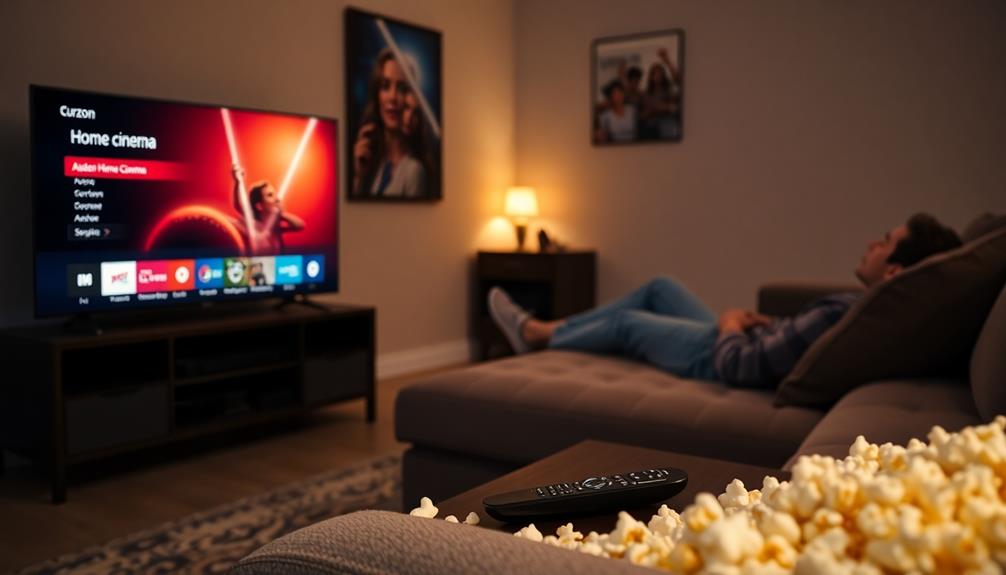
Even with the Curzon Home Cinema app installed, some LG TVs may not fully support its features.
To enhance your viewing experience, consider using external streaming devices like Chromecast or Amazon Fire Stick. These options often provide a more reliable way to access Curzon Home Cinema, especially if your LG Smart TV has limited app support.
Here's what you can do for best streaming:
- Verify your TV's firmware is up to date.
- Maintain a stable internet connection (minimum 5 Mbps).
- Use HDMI connections from laptops or streaming devices for better quality.
- Cast from your mobile device for an easy streaming solution.
- Clear the app cache in the TV settings if you face performance issues.
Troubleshooting Common Issues
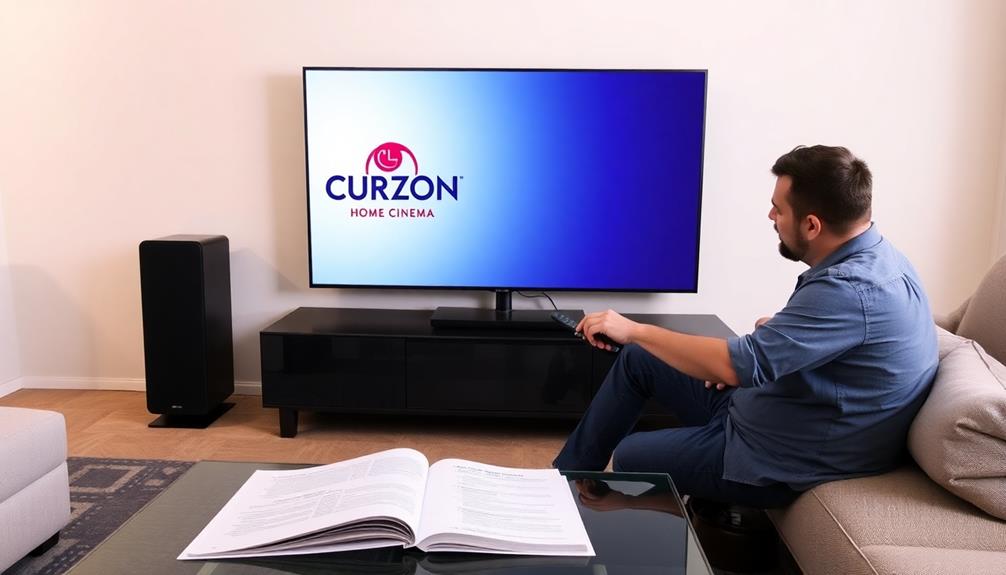
When streaming issues arise on your LG TV, addressing them promptly can greatly enhance your viewing experience. Start by checking for a firmware update; keeping your TV's software current guarantees peak performance and compatibility with the Curzon Home app.
Next, assess your internet speed. For smooth streaming, a stable connection with a minimum of 5 Mbps is recommended.
If the Curzon app fails to load or behaves unexpectedly, try restarting your LG Smart TV. This simple step can refresh the system and clear temporary glitches.
Additionally, consider clearing the app cache in your TV settings. This can resolve performance issues and improve your overall streaming experience.
If you're still facing problems, it might be time for some more in-depth troubleshooting. Uninstalling and then reinstalling the Curzon Home Cinema app can reset it and eliminate any potential software bugs that might be causing the streaming issues.
Accessing Your Film Library
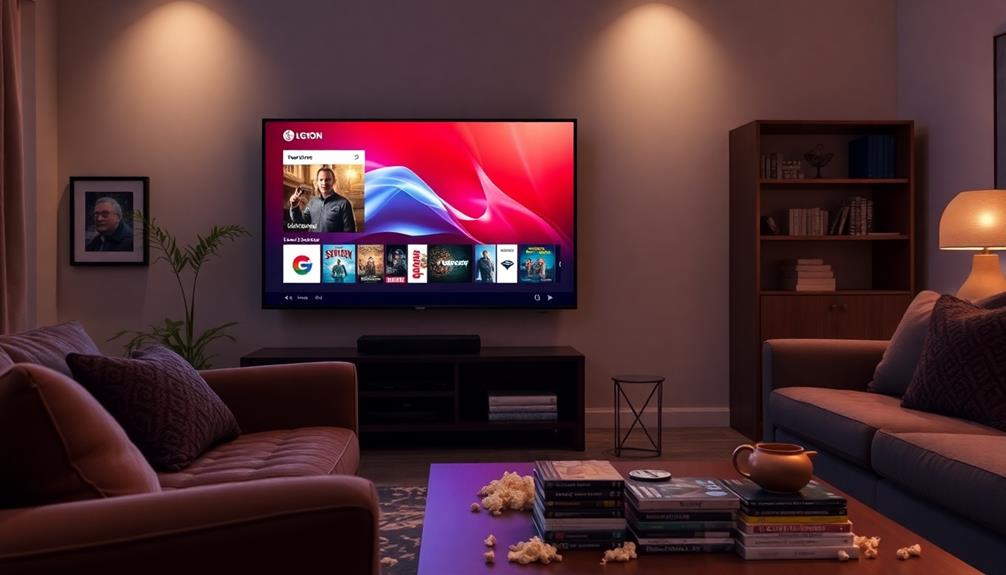
To access your film library on Curzon Home Cinema, simply log in with the email address linked to your account on your LG TV.
Once you're logged in, head over to the "MY LIBRARY" section of the app to view your rented films. Remember, after renting a film, you'll have 30 days to start watching, and once you hit play, the watch window lasts for 48 hours.
Here are a few tips to guarantee smooth access to your film library:
- Make sure you have a stable internet connection.
- Regularly check for app updates on your LG TV.
- If you encounter issues, consider restarting your TV or the app.
- If your LG TV isn't directly compatible, think about using devices like Chromecast or Amazon Fire Stick for enhanced functionality.
- Keep your account details handy to log in quickly.
With these steps, you'll be ready to explore your film library and enjoy all the rentals you've chosen on Curzon Home Cinema.
Happy watching!
Customer Support Options

If you encounter any issues while using Curzon Home Cinema, there are several ways to get help.
You can reach out via live chat, phone, or email for support, and there's also an FAQ section for quick troubleshooting.
Don't hesitate to provide feedback, as it helps improve the service for everyone.
Support Contact Methods
Curzon Home Cinema provides several convenient customer support options to guarantee you get the help you need.
Whether you're facing streaming issues or need assistance with account management on your LG TV, they've got you covered.
Here are the ways you can reach out for support:
- Live Chat: Get immediate assistance during operational hours (8 am – 9 pm weekdays, 9 am – 8 pm weekends).
- Telephone Support: Call 01233 555648 for a local rate option to discuss your inquiries directly.
- Email Support: For less urgent queries, send an email; just keep in mind that response times may vary.
- Online FAQs: Check the Curzon Home Cinema website for answers to common questions regarding streaming and account management.
- Feedback Mechanisms: Share your experiences and suggestions directly with the support team to enhance user experience.
With these options, you can easily reach out for help and enjoy your movies without hassle.
Troubleshooting Streaming Issues
When you're facing streaming issues on your LG TV, it's essential to take a few quick steps to troubleshoot the problem. First, check your internet speed; it should meet the minimum requirement of 5 Mbps for stable streaming.
If your internet is fine, try restarting your LG Smart TV. This simple action often resolves issues with the Curzon Home Cinema app failing to load properly.
Next, clear the app cache in your TV settings. This can lead to significant performance improvement and may resolve any playback issues you're experiencing.
If problems persist, consider uninstalling and then reinstalling the Curzon Home Cinema app. A fresh install can refresh its functionality and fix lingering errors.
If you still encounter streaming issues, don't hesitate to reach out for help. You can access Curzon Home Cinema's live chat support for immediate assistance or contact LG customer service for device-specific troubleshooting.
They can guide you through additional steps tailored to your LG TV. By following these troubleshooting tips, you'll be well on your way to enjoying uninterrupted streaming on Curzon Home Cinema.
Frequently Asked Questions
Can I Watch Curzon Home Cinema on My Smart TV?
You can't directly watch Curzon Home Cinema on your smart TV, but you can use devices like Chromecast or Amazon Fire Stick. Make sure your internet connection's stable for the best streaming experience.
Can I Watch Curzon Home Cinema on Amazon Prime?
Curiously enough, you can watch Curzon films on Amazon Prime! Just guarantee you've got an active subscription. Browse the Curzon collection or search for specific titles to enjoy their cinematic offerings right away.
Is There a Curzon Cinema App?
There isn't a dedicated Curzon Cinema app for LG TVs. You can explore alternative streaming options or use compatible web browsers on your TV to access Curzon's content, ensuring your firmware's updated for peak performance.
Can I Download My Family Cinema on My LG Smart TV?
While your LG Smart TV might feel like a blank canvas, it doesn't natively support My Family Cinema. Consider using devices like Chromecast or Fire Stick to paint a vibrant streaming experience instead.
Conclusion
Now that you know how to watch Curzon Home Cinema on your LG TV, imagine diving into a world of enchanting films right from your couch. Picture the thrill of discovering new releases and hidden gems. But what if you encounter a hiccup? Don't worry—help is just a click away. Stay tuned, and let your cinematic journey unfold. With each film, you'll find yourself lost in stories that linger long after the credits roll.




